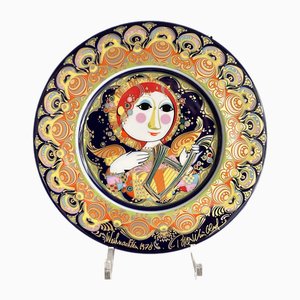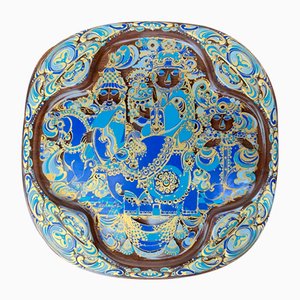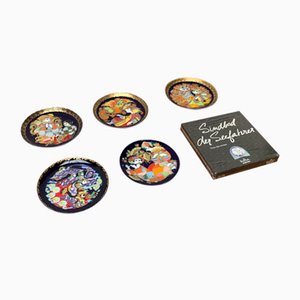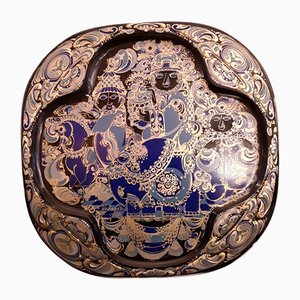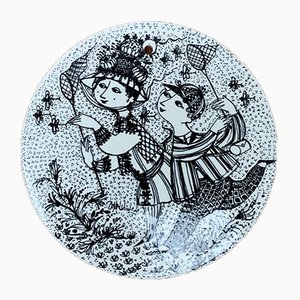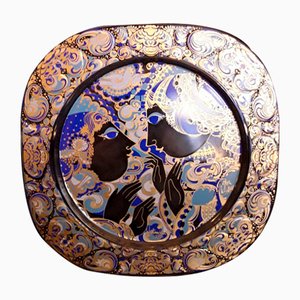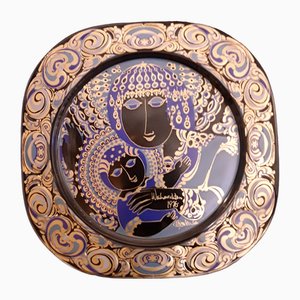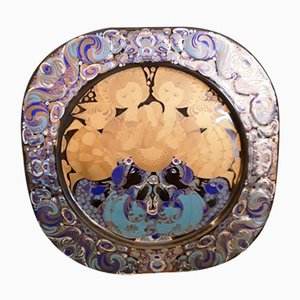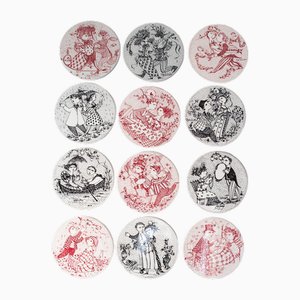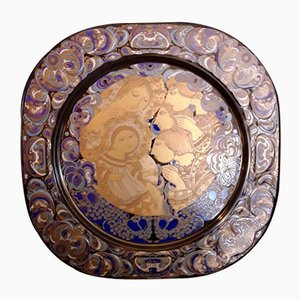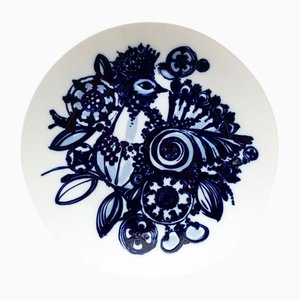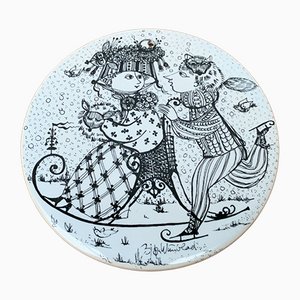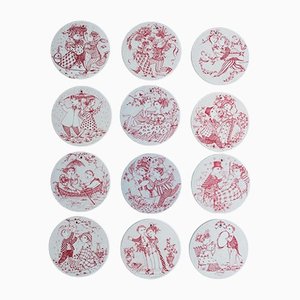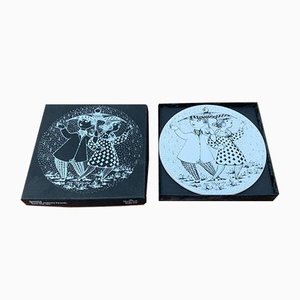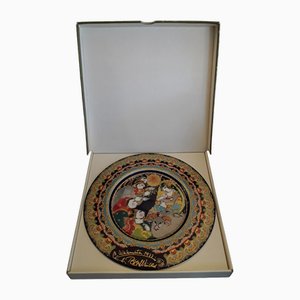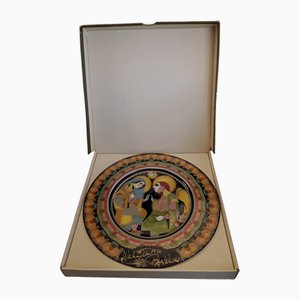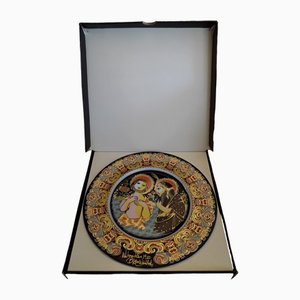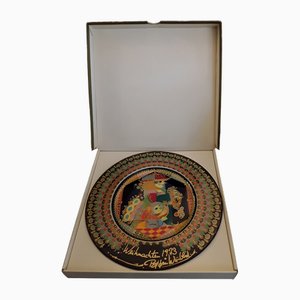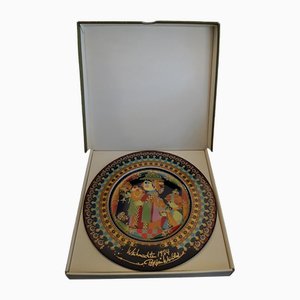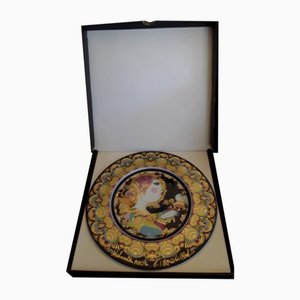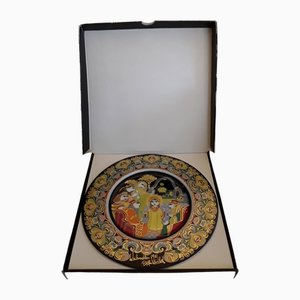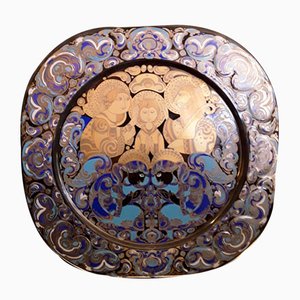
Danish artist, illustrator, and ceramicist Bjørn Wiinblad was born in Copenhagen in 1918 and exhibited an aptitude for the arts from an early age. He studied graphic arts at the Royal Danish Academy of Fine Arts in Copenhagen, graduating in 1943. In 1946, Wiinblad joined Nymølle, a Danish pottery manufactory (which Wiinblad would eventually take ownership of in 1976). He opened his own design studio in 1952, and shortly after began designing for the German porcelain company Rosenthal. Wiinblad was appointed Rosenthal’s chief designer in 1957, a position that allowed him to travel across Europe while achieving international recognition.
Instead of designing in a functionalist aesthetic like many of his midcentury contemporaries, Wiinblad espoused a delicate and romantic style that was dominated by a rich color palette and undulating lines, often drawing inspiration from fairy tales. His dedication to lyrical ceramic design can be seen in his iconic Magic Flute series (1959) for Rosenthal, a beautifully etched porcelain tableware collection created in homage to Mozart’s opera, Zauberflöte. Other notable designs for Rosenthal include Romance (1959), 1001 Nights Series (1969), and Quatre Couleurs Series (1960s).
Although best known today for his ceramics, Wiinblad worked across a variety of media. In 1947, he was commissioned by the United States Embassy in Paris to complete a series of posters. It was around this time that he also started a career in costume and set design for the Royal Theater of Copenhagen; including designs for Lysistrata (1949), Undine (1962), and Hans Christian Andersen’s The Swineherd (1969).
Wiinblad’s work has been featured in many museum exhibitions and permanent collections around the world, including the Victoria & Albert Museum in London, Museum of Modern Art in New York, and the Nationalmuseum in Stockholm.
Wiinblad passed away in 2006.


